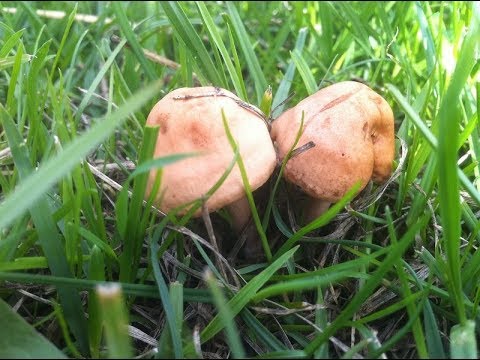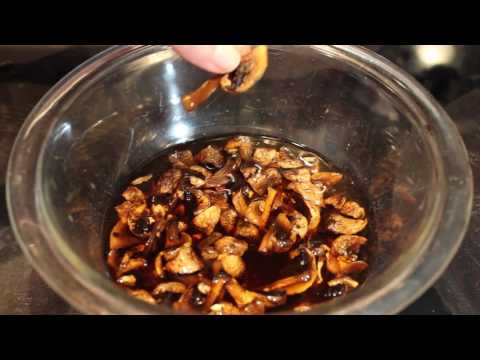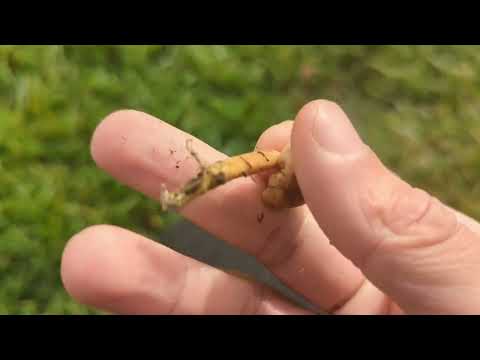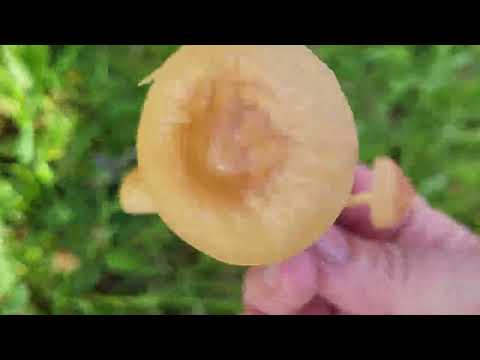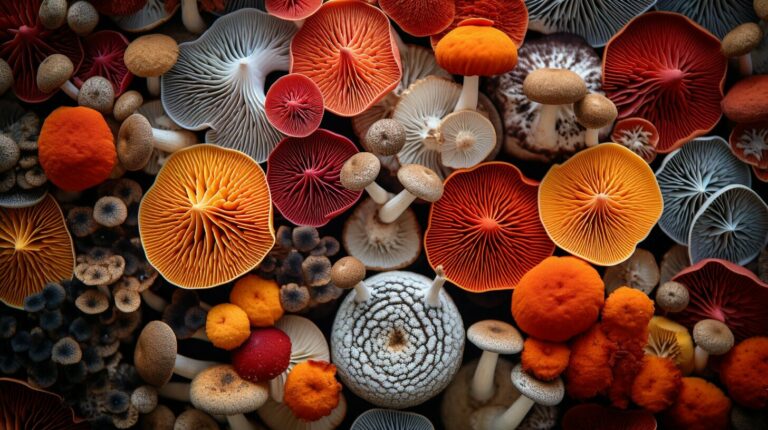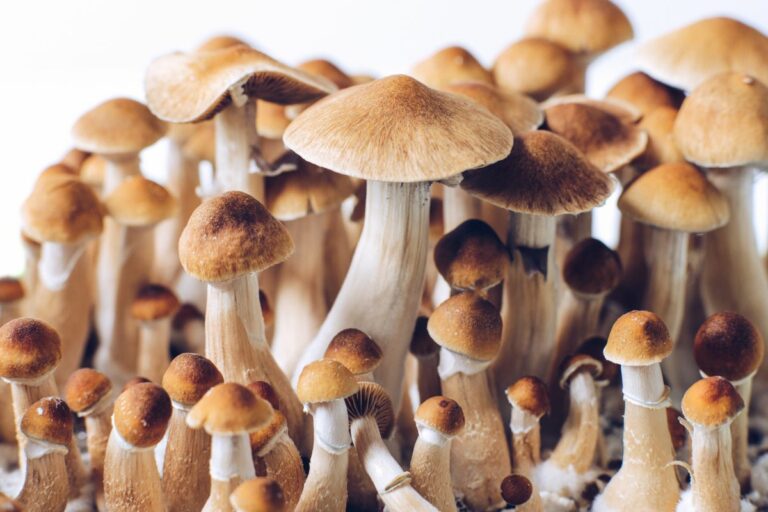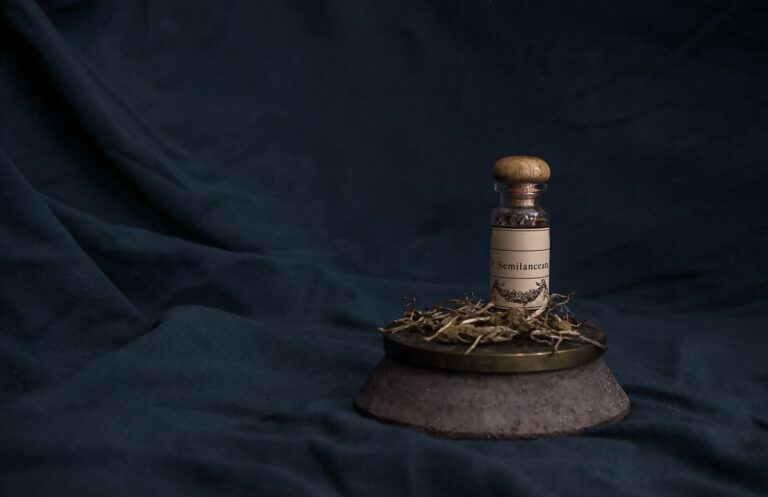Marasmius oreades, commonly known as the fairy ring mushroom, is a species of edible fungus notable for its interesting growth pattern and culinary value. This mushroom is typically found in grasslands across Europe and North America, where it forms naturally occurring patterns known as fairy rings due to the outward radial growth of its mycelium. The rings expand over time, often visible on the ground as dark green circles lush with grass. These characteristics have not only embedded the mushroom into folklore but also attracted scientific interest due to their unique growth and maintenance of genome integrity.
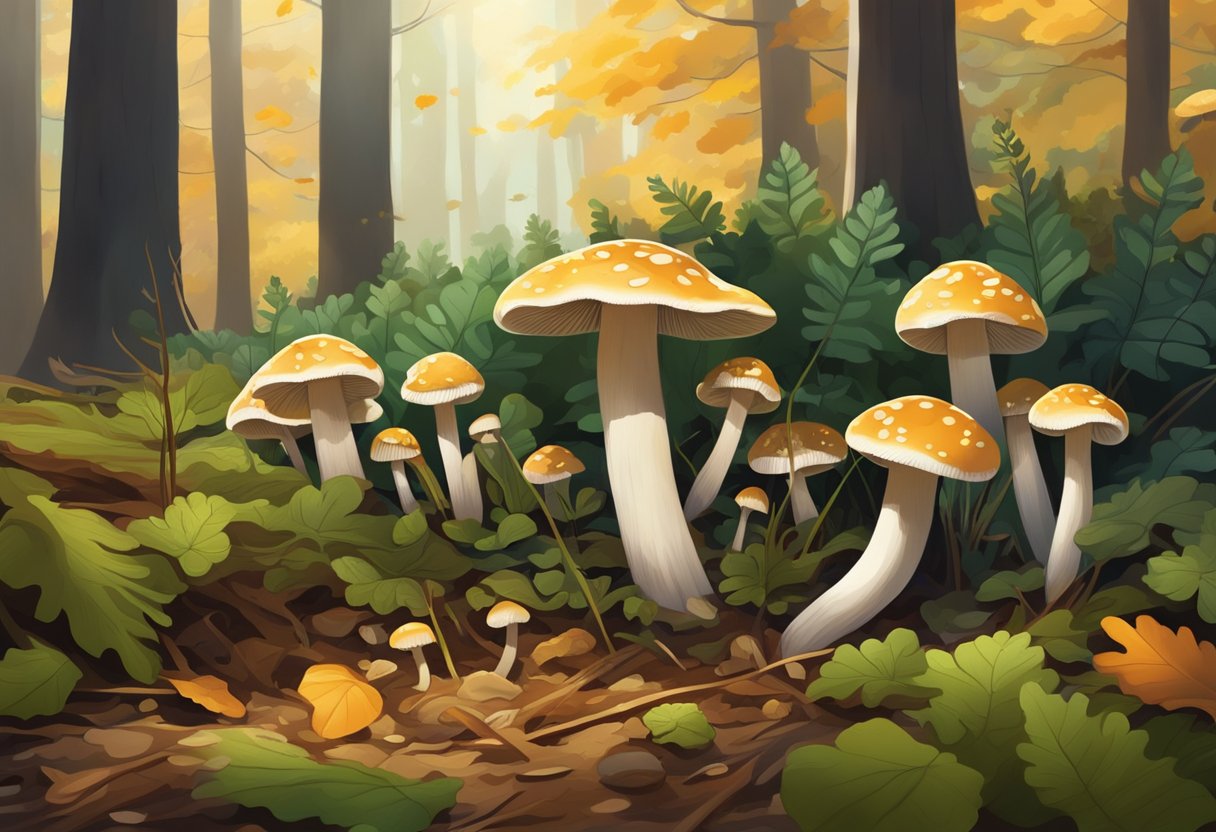
The fairy ring mushroom is distinguished by a cap that ranges in color from tan to rich brown, capable of withstanding desiccation due to its hygrophanous nature. When conditions are favorable, it rehydrates and continues to disperse spores. In the kitchen, Marasmius oreades is prized for its nutty flavor and is often used in an array of dishes where its robust texture is desired. Beyond its culinary use, this mushroom has been the subject of numerous studies revealing properties beneficial to health, including antioxidant, anticancer, antimicrobial, and antibiofilm activities.
Apart from its gastronomic and medicinal applications, Marasmius oreades plays a significant role in ecosystem dynamics. The mushroom has intricate relationships with soil, plants, and other organisms in its natural habitat, contributing to nutrient cycles and soil structure. Genetic studies have also demonstrated a high level of genome integrity over its growth phases, suggesting a potential model organism for understanding cellular mechanisms in fungi. The fairy ring fungus remains an intriguing organism for both mycologists and naturalists, offering insights into the complex interplay between fungi and their environment.
Taxonomy and Classification
Table of Contents
Marasmius oreades, commonly known as the fairy ring mushroom, has undergone significant taxonomic reconsideration over time. Understanding its classification illuminates the evolutionary relationships within the genus Marasmius.
Historical Taxonomy
The classification of Marasmius oreades has been subject to change since its initial identification. Elias Magnus Fries, a pioneering mycologist, described this species in the 19th century. He initially named it Agaricus oreades before reclassifying it into the genus Marasmius. Over the years, the species has been known by various synonyms including Scorteus oreades and Chamaeceras caryophylleus. Collybia oreades was another notable synonym used for this species, aligning it with a different genus.
Current Taxonomy
Currently, Marasmius oreades stands as the accepted name for the fairy ring mushroom. Its placement within the genus Marasmius, part of the family Marasmiaceae, reflects modern understanding based on morphological characteristics and genetic data. The name Marasmius oreades pays homage to its typical habitat and morphology, with “oreades” suggesting its association with meadows. The genus name Marasmius itself is a reference to the typically withering and reviving nature of these fungi. Taxonomists recognize Marasmius as a genus with diverse species, each demonstrating specific adaptations, which attests to the genus’s complexity and ecological significance. The species concept within Marasmius continues to be refined as new methods in molecular phylogenetics are employed, reinforcing the distinction of Marasmius oreades among its congeners.
Morphological Description
The Marasmius oreades is distinguished by specific characteristics in its cap, gills, spores, and stem, offering a wealth of detail ripe for examination by mycologists and enthusiasts alike.

Cap Characteristics
The Marasmius oreades mushroom sports a distinctive cap that usually measures between 2 to 5 centimeters in diameter. The cap starts with a convex shape and often develops a pronounced central depression as it matures, typically exhibiting a smooth texture. Its color ranges from creamy to light tawny, often with a darker center, and in wet conditions, the cap can appear somewhat transparent.
Gills and Spores
Underneath the cap, off-white gills are observed which are attached to the stem and stand crowded together. They are notable for their straight-spaced organization extending from the edge of the cap to just a short distance from the stem. This species is characterized by a white spore print, the spores being ellipsoidal and smooth, measuring 7-10 microns in length.
Stem Features
The stem of Marasmius oreades is slender, typically 2 to 8 centimeters tall, and has a tough, fibrous quality. Its color is consistently pale, complementing the off-white of the gills and providing contrast to the cream or tawny cap. The flesh within the stem, like the rest of the mushroom, retains a delicate consistency and does not offer a particularly distinct taste or odor.
Habitat and Distribution
Marasmius oreades, also recognized as the fairy ring mushroom, has distinct ecological preferences and is spotted across a broad geographical range. It thrives in certain landscapes and can be found in notable expanses both in North America and Europe.
Preferred Habitats
Marasmius oreades favors temperate regions, commonly establishing itself in grassy areas such as lawns and meadows. It is especially prolific in areas where the grass is short and the soil has good drainage, thereby enjoying the microhabitat beneath the canopy of grass rather than taller trees or shrubs. The ability to form conspicuous rings in turf is a distinguishing characteristic of this species which can sometimes encompass expansive areas over time. Its preferred habitats also extend to sandy dunes where grasses are the dominant vegetation.
Geographical Spread
The fairy ring mushroom exhibits a cosmopolitan habitat, with its presence recorded extensively throughout North America and Europe. In Europe, the species is widely distributed, seen in numerous countries across the continent. Similarly, in North America, it is found coast to coast, including both the United States and Canada, signifying its adaptability to a variety of temperate environments. Known to populate grassy places, it displays not only tolerance but often a preference for human-affected areas such as parklands and golf courses.
Ecological Role
Marasmius oreades, commonly known as the fairy ring mushroom, plays a significant role in ecosystem dynamics through its distinctive growth patterns and interactions with other organisms.
Fairy Rings Formation
Mushroom mycelium propagates underground, creating a circular growth pattern known as a fairy ring. These rings or arcs become visible on the surface as the fungus exhausts nutrients in the center and expands outward. Over time, these rings can reach several meters in diameter, with fruiting bodies appearing primarily along the outer edge. This circular growth reflects both the life cycle of the organism and its resource utilization strategies within the ecosystem.
Interaction with Grasses
Marasmius oreades interacts with the surrounding grass quite remarkably, often resulting in a darker green coloration along the ring. This change is due to increased nitrogen levels from the fungal activity, which enhances grass growth. However, as the mycelium advances, it can deplete soil nutrients, potentially leading to a zone of inhibited growth inside the ring. These interactions exemplify the role of biofilms and fungal ecology, affecting both soil composition and plant vigor in their habitats.
Culinary Uses
Marasmius oreades, commonly known as the fairy ring champignon, is a prized edible mushroom celebrated for its delicate flavor. It is often incorporated into various dishes, from rustic soups to sophisticated sauces.
Edibility and Culinary Profile
This mushroom is indeed edible and known for its nutty taste. When preparing Marasmius oreades, it is customary to use only the caps, as they possess the most desirable texture and flavor. The stems, being somewhat tough, are commonly discarded. The culinary profile of these edible fungi is compatible with a multitude of cooking methods, which makes them a versatile ingredient in the kitchen.
Popular Recipes
Among the range of recipes that showcase Marasmius oreades, some popular choices highlight the mushroom’s texture and flavor:
- Soup: A simple fairy ring champignon broth infused with herbs.
- Pasta Sauce: The mushrooms are sautéed and then simmered to create a rich, flavorful sauce that complements pasta perfectly.
- Risotto: They add an earthy depth to the creamy rice dish, often accented with Parmesan cheese and white wine.
These recipes not only capitalize on the mushroom’s edibility but also its ability to enhance the overall taste of traditional and contemporary dishes.
Nutritional and Medicinal Properties
Marasmius oreades, commonly known as the fairy ring mushroom, offers several nutritional and medicinal benefits. Scientific studies have identified these benefits primarily from the mushroom’s bioactive compounds, which exhibit noteworthy antioxidant, anticancer, and antimicrobial properties.
Health Benefits
-
Nutritional Content: These mushrooms are a good source of protein, providing essential amino acids necessary for various bodily functions. The health benefits associated with Marasmius oreades stem from their rich nutritional profile, particularly their protein content, which is crucial for building and repairing tissues.
-
Antioxidant Activity: Research has shown that the extracts of Marasmius oreades contain powerful antioxidant properties, which help in neutralizing harmful free radicals in the body. This oxidative stress mitigation can contribute to reducing the risk of chronic diseases.
-
Antimicrobial Effects: Marasmius oreades exhibits antimicrobial properties, which have been identified in various studies analyzing mushroom extracts. These properties make it an important species to study for potential uses in fighting bacterial infections.
Bioactive Compounds
-
Anticancer Potential: Bioactive compounds in Marasmius oreades, such as phenolic compounds, have been researched for their anticancer properties. These compounds may help inhibit the growth of cancerous cells.
-
Antibiofilm Capabilities: An interesting area of research has focused on Marasmius oreades’ antibiofilm properties. By disrupting biofilm formation, these mushrooms may play a role in preventing the spread of infections, particularly those resistant to standard treatments.
Identification and Foraging
Marasmius oreades, also known as the fairy ring mushroom or fairy ring champignon, can be identified by seasoned foragers by its unique characteristics and growth in fairy ring patterns. To forage for these fungi effectively, it’s critical to know identification markers and to adhere to best practices to ensure safety and sustainability.
Identification Tips
Marasmius oreades is distinguishable by its small, buff to tan cap that usually measures between 2 to 5 centimeters across. Here are specific features for identification:
- Cap Shape: The cap starts out convex with a deep depression in the center and often becomes flatter as it matures.
- Gills: They have free gills, meaning they don’t attach directly to the stem, and are white to cream in color.
- Stem: The stem is tough, slender, and the same color or slightly lighter than the cap.
- Smell: These mushrooms emit a characteristic, pleasant, nutty aroma.
- Spore Print: They produce a white spore print, a critical detail used by foragers for correct identification.
These mushrooms often grow in an arc or a full circle, known as a fairy ring pattern, where the mycelium grows outwards from a central point.
Foraging Best Practices
Successful and responsible foraging for fairy ring champignon hinges on:
- Timing: They commonly appear in late summer to fall.
- Habitat: Look for these mushrooms in grassy areas, lawns, and sometimes woodland edges.
- Sustainability: Only collect what you need and be careful not to disturb the mycelium to allow the colony to continue growing.
- Safety: Cross-reference findings with reliable identification applications or literature, given the potential misidentification with other species such as the toxic Psilocybe subaeruginosa.
For safe foraging, one always has to confirm the identity of Marasmius oreades with a detailed mushroom guide or a trusted application that assists foragers in distinguishing edible mushrooms from poisonous look-alikes. Remember to never consume any wild mushrooms without absolute positive identification.
Conservation and Sustainability
Marasmius oreades, commonly known as the fairy ring mushroom, is renowned for its circular growth pattern in grasslands. Sustainability of wild mushrooms like these is of growing concern, as changes in land use and environmental factors can affect their habitats.
Habitat Protection: They thrive in well-maintained lawns and meadows, making it vital to preserve these areas from urban development and pollution. These mushrooms also contribute to the ecosystem by decomposing organic matter, thus sustaining soil health.
- Sustainable Harvesting: When foraging for fairy ring mushrooms, it is crucial to harvest sustainably. Only picking mature specimens and leaving the mycelium undisturbed ensures future growth cycles.
- Avoid overharvesting
- Use proper foraging techniques
Environmental Influence: Climate change can alter the growth patterns of M. oreades. Prolonged wet or dry seasons impact their fruiting times and abundance.
Conservation Education: Educating mushroom foragers and the public on the importance of conserving wild mushroom species like Marasmius oreades can aid in their preservation. Knowledge on identifying and sustainably harvesting these mushrooms can prevent strain on populations.
Research and Monitoring: Continued research into the genomic mutation accumulation in the fairy-ring mushroom can provide insights into their resilience and adaptation to changing environments. Monitoring population levels can also lead to better conservation strategies.
By combining careful management of mushroom habitats, responsible foraging practices, and ongoing research and education, the conservation and sustainability of Marasmius oreades can be supported, ensuring their presence in ecosystems for future generations.
Cultural Significance
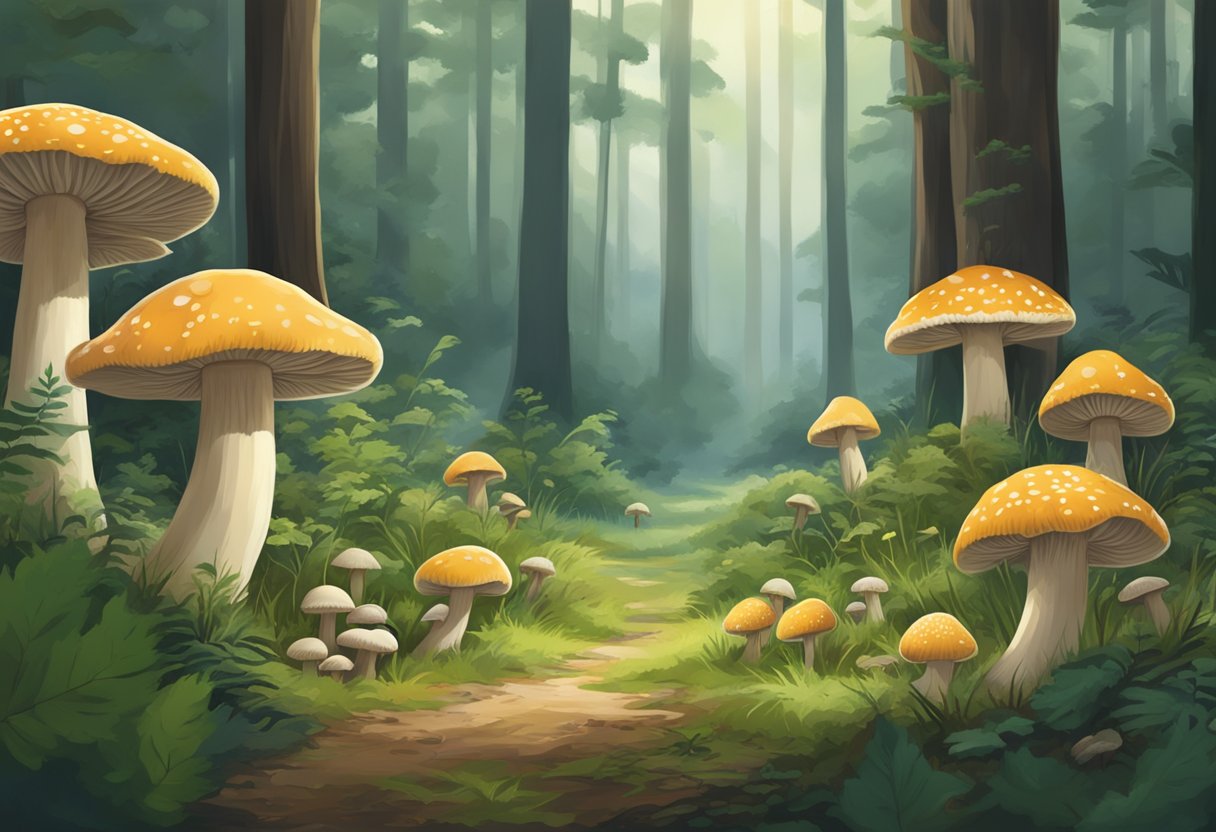
Marasmius oreades, also known as the fairy ring mushroom, holds an intriguing place in cultural lore, often linked to enchantment and mystical occurrences.
Folklore and Myths
Folklore: In European tales, Marasmius oreades is famously associated with fairy rings—naturally occurring arcs of mushrooms said to be the sites of fairy dances. These rings have sparked imagination and lore for centuries, with some believing they are gateways to other realms or that stepping into one could lead to supernatural consequences.
Resurrection Mushroom: The impressive ability of Marasmius oreades to revive after rain has earned it the nickname “resurrection mushroom.” This trait, along with its circular growth pattern, has intertwined it with themes of cyclical life and rebirth in various cultural stories and traditions.
Potential Risks and Confusions
Marasmius oreades, also known as the fairy ring mushroom, is commonly sought after by foragers for its culinary value. However, its identification can be challenging, and it is occasionally confused with toxic species, posing health risks. Accurate identification is crucial due to the presence of toxic look-alikes and its potential environmental impact.
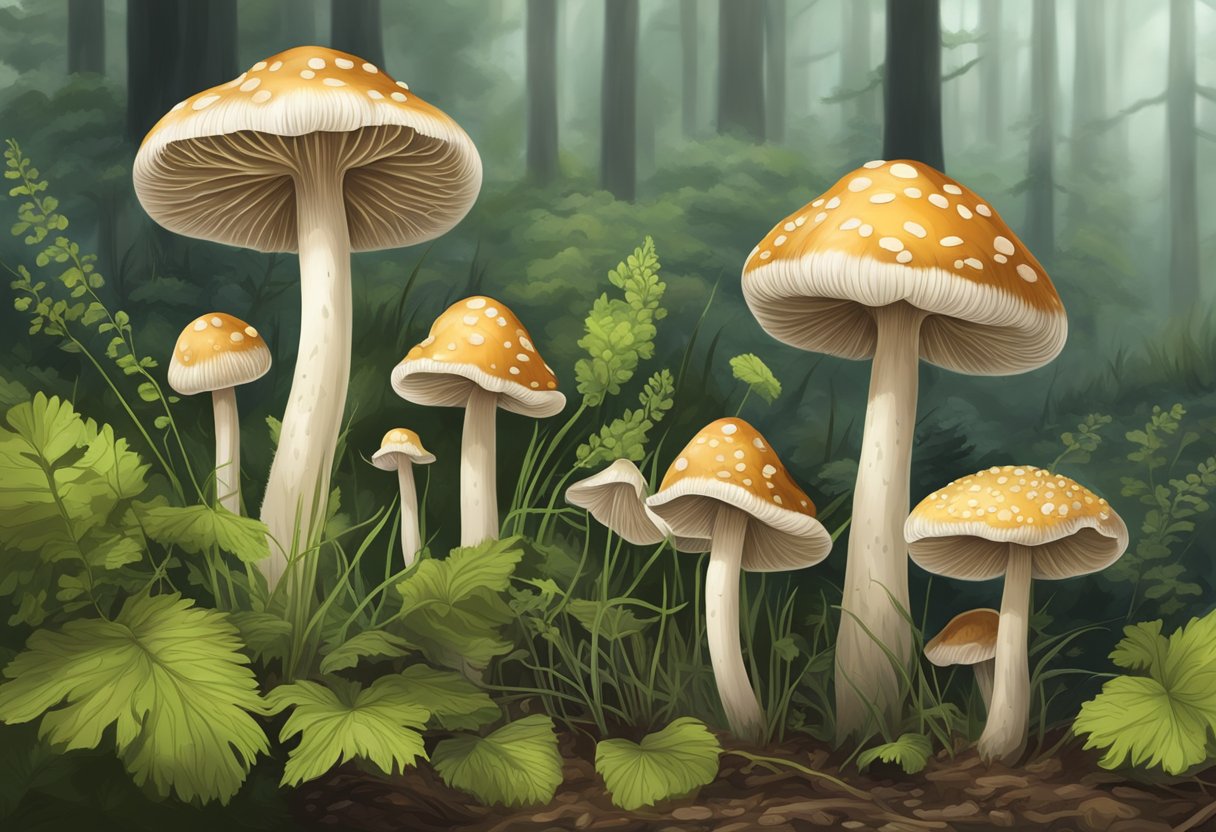
Toxic Look-Alikes
Marasmius oreades is often misidentified due to its resemblance to several toxic species. Two of the most dangerous look-alikes include Chlorophyllum molybdites, which causes gastrointestinal distress, and Clitocybe rivulosa, known for its potentially deadly muscarine content. They are a part of a group commonly referred to as LBMs (Little Brown Mushrooms), a term used by mushroom hunters to describe small mushrooms that are difficult to identify due to their nondescript features. This similarity can lead to unintentional ingestion and subsequently, mushroom poisoning.
- Chamaeceras saryophylleus and Chlorophyllum molybdites:
- Gastrointestinal toxins present
- Larger and more robust than M. oreades
- Clitocybe rivulosa:
- Contains muscarine toxin
- Usually found in grass, similar to fairy rings
Environmental Impact
The ecological footprint of Marasmius oreades extends beyond its potential for toxicity. The use of pesticides and herbicides in environments where this mushroom grows can pose a wider concern. Agaricus campestris, another non-toxic mushroom which shares habitats with Marasmius oreades, may absorb these chemicals, thus posing a risk when mushrooms are consumed from areas treated with such substances. Moreover, the fairy rings produced by M. oreades can affect grass growth patterns on lawns and golf courses, but evidence suggests that common control chemicals have minimal impact on mitigating these rings’ formation.
- Pesticides and Herbicides:
- Can be absorbed by mushrooms
- Risk of chemical ingestion when consuming wild mushrooms
- Fairy Ring Impact:
- Affects grass growth
- Resilient to some environmental control methods
Scientific Research

Marasmius oreades, commonly known as the fairy ring mushroom, has attracted scientific interest due to its distinctive biological and ecological traits. Recent research has focused on its antioxidant and antimicrobial properties, as well as its genetic structure and its potential impacts on other fungi such as Strobilurus, Marasmiellus, and Micromphale.
Current Studies
Current studies on Marasmius oreades have uncovered significant findings regarding its antioxidant and anticancer effectiveness. For instance, a study from Turkey revealed that this mushroom contains compound profiles that contribute to its antimicrobial and antibiofilm properties. The phenolic composition of M. oreades ethanol extract indicated the presence of beneficial enzymes like glutathione-S-transferase, essential in combating oxidative stress (Antioxidant, Anticancer, Antimicrobial, and Antibiofilm Properties of Marasmius oreades).
Moreover, its genetic makeup and spatial structures have been analyzed, providing insights into its proliferation within ecosystems. Specific studies implemented DNA amplification fingerprinting (DAF) to examine the population genetics of this species in a Norwegian sand dune ecosystem, contributing significantly to the understanding of its distribution and growth patterns (Population genetics and spatial structure of the fairy ring fungus Marasmius oreades).
Future Directions
Looking ahead, researchers are keen to study the interactions between Marasmius oreades and other closely related genera such as Strobilurus, Marasmiellus, and Micromphale. Understanding these interactions can shed light on ecological competition and symbiosis, which can have broader implications for forest ecosystems. Another focal point is the potential medical applications of the compounds found in M. oreades, especially as they relate to natural antibacterial and anticancer treatments.
Furthermore, the maintenance of high genome integrity over vegetative growth presents a fascinating frontier for genetic stability research (Maintenance of high genome integrity over vegetative growth in the fairy-ring mushroom Marasmius oreades). These areas of inquiry will not only enhance the scientific understanding of Marasmius oreades but also underscore the mushroom’s relevance to medical and environmental research.
Frequently Asked Questions
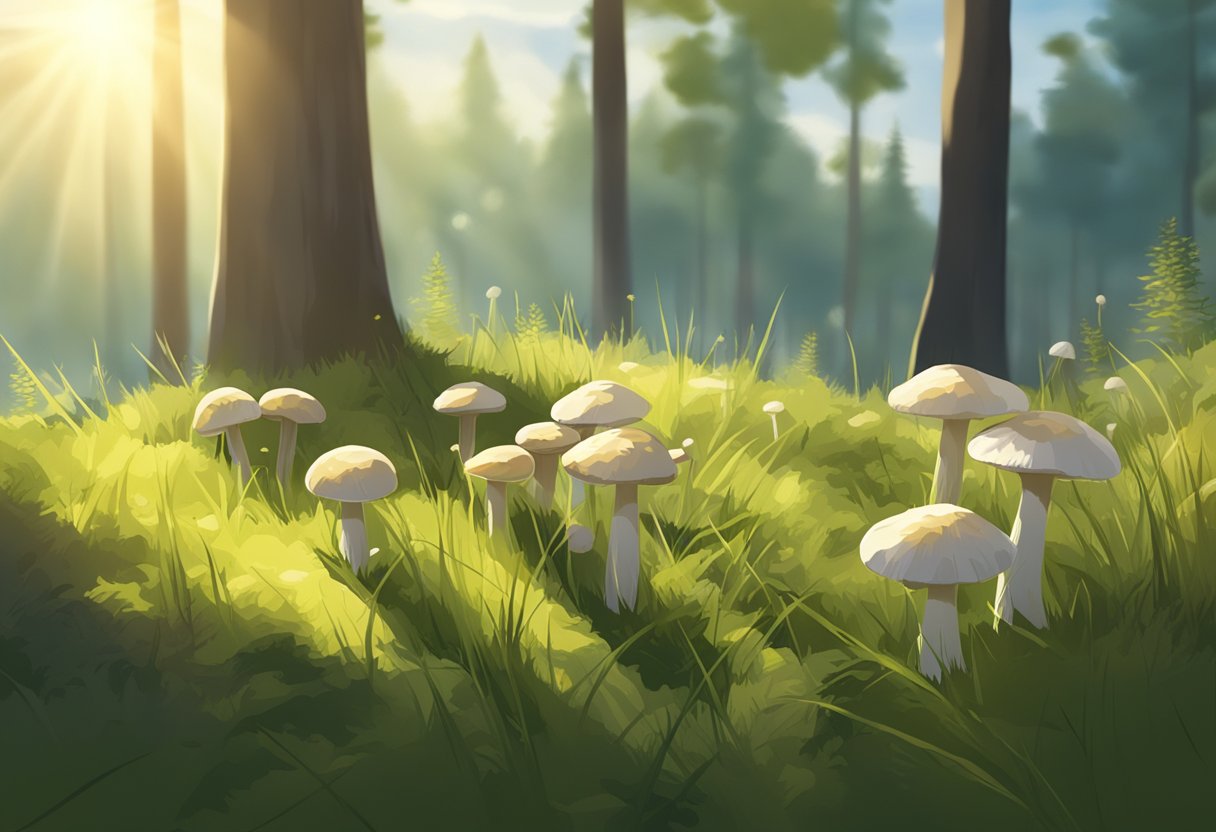
This section aims to provide clarity on common queries pertaining to Marasmius oreades, a mushroom enjoyed by foragers and subject to various studies.
How can one identify Marasmius oreades in the wild?
Marasmius oreades, also known as the fairy ring mushroom, is recognized by its small, buff to tan cap, and its preference for growing in grasslands in a fairy ring pattern.
What is the correct way to pronounce ‘Marasmius oreades’?
The scientific name of this species is pronounced as “muh-RASS-mee-us oh-REE-uh-deez.”
Can consumption of Marasmius oreades pose a risk to canine health?
Generally considered edible for humans, Marasmius oreades should be given to dogs with caution, as their reactions to wild mushrooms can vary and some individuals might experience gastrointestinal distress.
What is involved in the reproductive process of Marasmius oreades?
Marasmius oreades reproduces through spores, which are released from gills beneath the cap; environmental conditions influence their development and dissemination.
What is the appearance and significance of the spore print of Marasmius oreades?
The spore print of Marasmius oreades is white, which is a key identification feature helping to distinguish it from potentially toxic species.
What is the historical significance and folklore associated with Marasmius oreades?
The fairy ring mushroom has a rich folklore, often associated with magical rings of mushrooms that folklore suggests were created by dancing fairies or elves.


